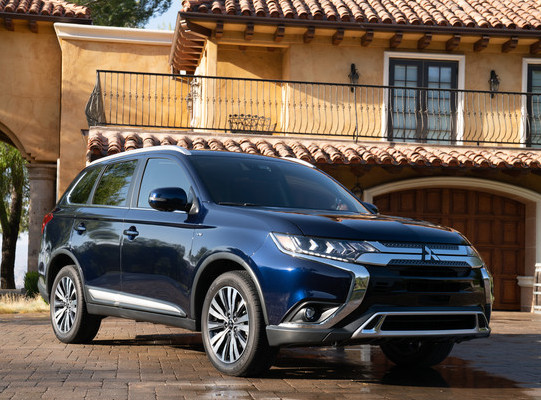
Massive Recall: Mitsubishi Front Suspension Can Detach From Body
Two recalls for Mitsubishi vehicles involve over 140,000 cars spread out over several years and models. The first issue addresses the corrosion of the front cross member. Especially those vehicles used in cold-weather states subjected to road salt, snowmelt water, or anti-freezing agents are most at risk. Corrosion can cause the lower front suspension A-arms to detach from the body.
The Mitsubishi recall is for vehicles in the Salt Belt regions

For now, Mitsubishi is recalling vehicles in the Salt Belt regions. Those states affected include Connecticut, Delaware, Illinois, Indiana, Iowa, Kentucky, Maine, Maryland, Massachusetts, Michigan, Minnesota, Missouri, New Hampshire, New Jersey, New York, Ohio, Pennsylvania, Rhode Island, Vermont, Virginia, West Virginia, Wisconsin, and Washington D.C.
It is odd that this first recall is limited to Salt Belt states because the nature of cars is to travel. How would a vehicle that spent its entire time in a cold state and then is sold in the Pacific Northwest be immune from corrosion?
Those Mitsubishi vehicles involved in the first recall are 2008-2010 Lancers, 2010 Lancer Sportbacks, 2008-2013 Outlanders, and 2011-2016 Outlander Sports models. Mitsubishi dealerships will inspect affected models and make a “judgment call” about the damage if any.
If the damage is too severe the Mitsubishi dealership will remove and replace the cross member

For those showing no or minimal damage, the dealership will spray an anti-corrosion protective coating on the cross member. If the damage is too severe the dealership will remove and replace the cross member. The owner will not be charged. The NHTSA recall is No. 20V279000.
The second recall is for the current 2019-2020 Outlander and 2019 Outlander PHEV models. Faulty seat belts for second-row seats is the issue with these Outlander models. Specifically, the passenger-side seatbelt may have been manufactured with the wrong parts.
NHTSA campaign No. 20V280000 states, “Due to an inappropriate manufacturing process at the supplier, the guide piece (which is a component part of the second-row seat belts’ anchorage) for the left side seat belt was mistakenly assembled with the right side seat belt, causing seat belt restraint efficiency for vehicle occupants to decrease in the vehicle collisions.”
If the seat belt is faulty it will be replaced at no charge to the owner

Of the 3,238 Outlanders that could have the faulty seat belts, Mitsubishi estimates only one percent actually have the defect. A dealership will inspect the vehicle. If the seat belt is faulty it will be replaced at no charge to the owner.
The Outlander has seen several generations since first hitting the market in 2001. This most recent iteration was introduced in 2019. Previous generations have tended to be on the mediocre side of crossovers. However, it was the best-selling PHEV for a number of years in Europe.
The Outlander’s excessive body lean and slow steering doesn’t help

The current Outlander still struggles to remain competitive. The PHEV can go 22 miles in electric mode only before switching over to hybrid power. One of the main issues is with handling which tends to be devoid of road feel. Excessive body lean and slow steering doesn’t help.
The general ride quality could use improvement as well. With the reorganization of the Nissan/Renault/Mitsubishi alliance, it is hoped that Mitsubishi’s product issues will be corrected.



